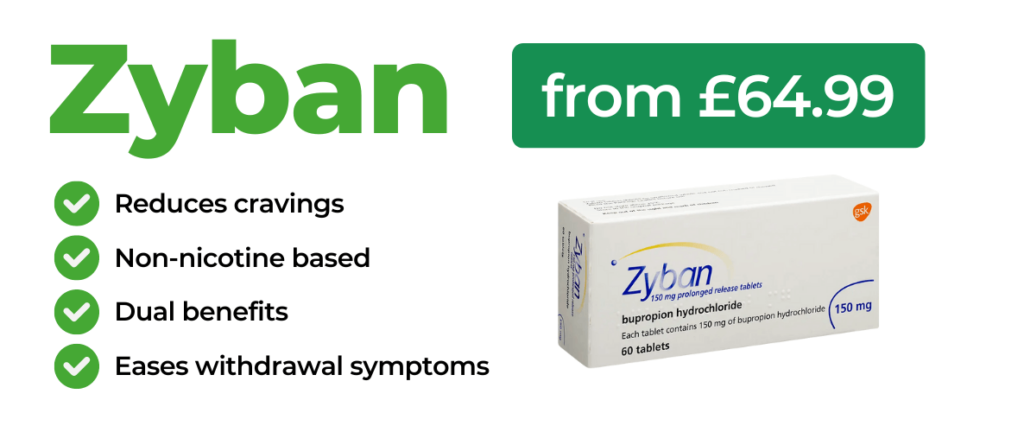What Is the Timeline for Nicotine Withdrawal?
Jump to
Quitting smoking is a significant step towards improving your health, and understanding the timeline for nicotine withdrawal can help you prepare for the changes your body will undergo. Here’s a detailed look at what happens when you quit smoking and how your body recovers over time.
🕛 After 20 minutes
Check your pulse rate; it will already be starting to return to normal.
Just 20 minutes after your last cigarette, your heart rate and blood pressure drop to healthier levels. This is the first sign that your body is starting to recover from the effects of nicotine.
🕧After 8 hours
Your oxygen levels are recovering, and your blood’s harmful carbon monoxide levels will have reduced by half.
Within 8 hours, the carbon monoxide in your blood decreases, allowing oxygen levels to return to normal. This reduction significantly improves the efficiency of your body’s cells and tissues.
🕝After 48 hours
All carbon monoxide is flushed out. Your lungs clear mucus, and your senses of taste and smell improve.
Two days after quitting, all carbon monoxide is eliminated from your body. Your lungs start to clear out mucus and debris, which can lead to noticeable improvements in your sense of taste and smell.
📅After 72 hours
If you notice that breathing feels easier, it’s because your bronchial tubes have started to relax. Also, your energy will be increasing.
Your bronchial tubes relax three days after you quit, making breathing easier. You’ll also start to feel a significant increase in your energy levels as your body adjusts to being nicotine-free.
📆After 2 to 12 weeks
Blood will pump through to your heart and muscles much better because your circulation will improve.
In the weeks following your decision to quit, your circulation continues to improve. This enhanced blood flow makes physical activities easier and reduces the risk of developing cardiovascular diseases.
🗓️After 3 to 9 months
Any coughs, wheezing, or breathing problems will improve as your lung function increases by up to 10%.
You’ll notice significant improvements in respiratory issues between three and nine months after quitting. Your lung function can increase by up to 10%, making breathing easier and reducing the frequency of coughs and wheezing.
🗓️After 1 year
Great news! Your risk of heart attack will have halved compared with a smoker’s.
One year after quitting smoking, your risk of coronary heart disease is half that of someone who still smokes. This is a significant milestone in your journey towards a healthier heart.
🗓️After 10 years
More great news! Your risk of death from lung cancer will have halved compared with a smoker’s.
A decade after quitting, your risk of dying from lung cancer is half that of a continuing smoker. Additionally, your risk of heart attack or stroke is the same as that of someone who has never smoked.
What are the dangers of smoking?
Smoking poses significant health risks, including increased chances of developing various diseases. These risks include:
- Lung cancer
- Chronic obstructive pulmonary disease (COPD)
- Heart disease
- Stroke
- Peripheral vascular disease
- Aortic aneurysm
Smoking also increases your risk of developing other health conditions such as type 2 diabetes, rheumatoid arthritis, and complications during pregnancy.
The true cost of smoking
The financial burden of smoking is considerable. Use the NHS Smokefree cost calculator to see how much money you can save by quitting. The cost of cigarettes adds up quickly, and quitting can lead to substantial savings over time.
Overcoming nicotine withdrawal symptoms
Withdrawal symptoms can be challenging but are manageable with the right strategies:
- Nicotine Replacement Therapy (NRT): Using patches, gum, or lozenges can help manage cravings and increase the success rate of quitting.
- Prescription medications: Medications such as varenicline (Champix) or bupropion (Zyban) can help reduce withdrawal symptoms.
- Behavioural support: Counselling and support groups provide essential emotional support and coping strategies.
Quitting smoking is one of the best decisions you can make for your health. Understanding the timeline of nicotine withdrawal and the benefits that come with quitting can help you stay motivated throughout the process. You can overcome the challenges with the right support and resources and enjoy a healthier, smoke-free life.
What are the immediate benefits of quitting smoking?
Quitting smoking starts to benefit your health almost immediately. Within 20 minutes, your heart rate and blood pressure drop. After 12 hours, the carbon monoxide level in your blood returns to normal. And within 2-12 weeks, your circulation improves and lung function increases.
What methods can I use to quit smoking?
There are several methods to quit smoking, including nicotine replacement therapy (patches, gum, lozenges), prescription medications (like varenicline or bupropion), counseling or support groups, and even alternative therapies like acupuncture or hypnosis. It’s essential to find the method that works best for you.
What are the withdrawal symptoms when quitting smoking?
Withdrawal symptoms vary from person to person but can include cravings, irritability, anxiety, depression, headaches, increased appetite, and difficulty concentrating. These symptoms are temporary and usually peak within the first few days after quitting, gradually improving over the following weeks.
How can I deal with cravings to smoke?
There are several strategies to cope with cravings, including distracting yourself with activities like walking or chewing gum, practicing deep breathing or relaxation techniques, keeping your hands and mouth busy with a healthy snack or drink, and reminding yourself of the reasons you decided to quit.
What are the long-term benefits of quitting smoking?
Quitting smoking has numerous long-term benefits for your health. Over time, your risk of developing smoking-related diseases such as lung cancer, heart disease, stroke, and respiratory conditions like COPD decreases significantly. You’ll also experience improvements in overall health, increased energy levels, and a longer life expectancy compared to continuing to smoke.


